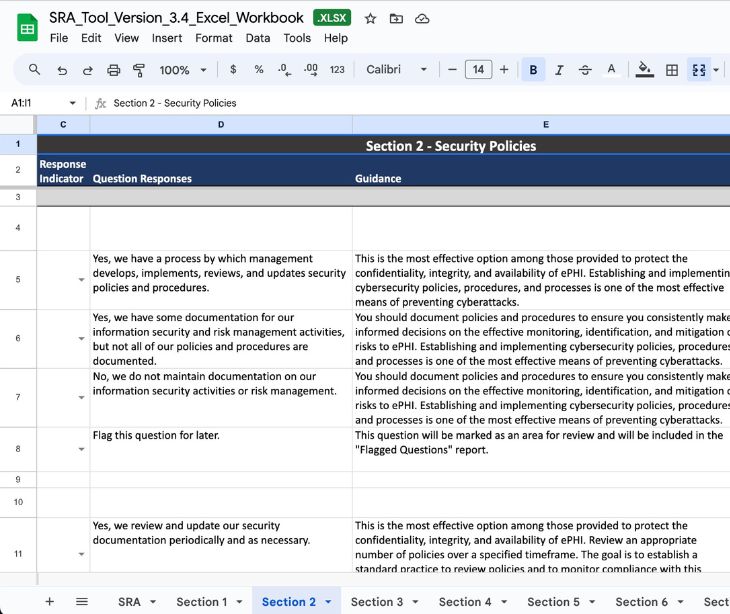
While cloud data storage provides significant advantages, it introduces risks related to data security, privacy, compliance, technical challenges, and service reliability. Effective risk management in a cloud storage environment involves implementing security measures to circumvent the risks.
Key risks associated with using cloud data storage
Data security
Unauthorized access: Cloud data storage is accessible via the internet, which makes it vulnerable to unauthorized access. If not properly secured, attackers can potentially gain access to sensitive data. This risk can result from weak authentication methods, compromised credentials, or misconfigured access controls.
Data breaches: Data breaches can occur if cloud providers' security measures are not robust. Breaches can expose sensitive patient information, leading to legal and financial consequences.
Shared responsibility: Cloud providers and organizations share responsibility for data security. Organizations must understand their role and obligations, particularly regarding the security of data stored in the cloud.
Data loss
Data deletion: Accidental or intentional data deletion can result in permanent data loss. Cloud providers usually have retention policies and valuable data may be deleted if not understood or configured correctly.
Service downtime: Cloud service providers may experience outages or downtime, affecting access to data. While many providers have high uptime guarantees, there is still a risk of temporary data inaccessibility during service interruptions.
Compliance and privacy
Data ownership and control: Organizations must maintain control over their data in a cloud environment. Understanding where the data is stored and having appropriate data access controls are crucial for compliance.
Data sharing and collaboration
Collaboration challenges: While cloud storage enables greater collaboration and data sharing, this also increases the risk of unintentional data exposure. Organizations must implement strict access controls to prevent unauthorized data sharing.
See also: How to be HIPAA compliant without worrying about HIPAA compliance
How cloud providers share responsibility for data security
In this model, the division of responsibilities is typically structured as follows: Cloud providers are responsible for the security "of" the cloud, which includes the physical infrastructure, network, and data center security. They ensure their data centers are secure and the hardware and infrastructure are maintained and protected.
On the other hand, healthcare organizations are responsible for the security "in" the cloud, which involves securing the data and applications they store and run within the cloud. This includes access controls, encryption, identity and access management, and compliance with HIPAA and other data protection regulations.
While the cloud provider offers a secure foundation, it's up to the organization to configure and use the services securely.
How AI and ML impact cloud storage
In a healthcare organization, artificial intelligence (AI) and machine learning (ML) significantly impact cloud storage. These technologies leverage the vast amount of healthcare data stored in the cloud to deliver data-driven insights, personalized medicine, and enhanced patient care.
AI and ML algorithms analyze patient records, medical images, and lab results, identifying patterns, predicting health risks, and recommending personalized treatment plans. They automate routine tasks, streamline administrative workflows, and optimize resource allocation, improving overall operational efficiency.
AI also plays a crucial role in medical imaging, aiding radiologists in diagnosing abnormalities more accurately. Additionally, these technologies support medical research by analyzing large datasets and accelerating the development of treatments. In telemedicine, AI-driven virtual assistants enhance the patient experience, and efficient data management ensures that healthcare data stored in the cloud is well-organized and accessible.
See also: A guide to HIPAA and cloud computing
Navigating the risks associated with cloud data storage
Healthcare organizations are responsible for maintaining secure protection measures such as HIPAA compliant email and training staff on how to maintain HIPAA compliance. Healthcare organizations are responsible for implementing effective methods of supporting cloud storage to complement data security.
Data security
Strong authentication: Implement multi-factor authentication (MFA) to enhance user identity verification. MFA adds an extra layer of security and reduces the risk of unauthorized access.
Encryption: Employ encryption methods to protect data in transit and at rest. Encryption ensures that even if unauthorized access occurs, the data remains unreadable.
Regular auditing: Conduct security audits and monitoring to detect and respond to any unusual activities promptly. This helps in identifying and mitigating potential threats.
Data loss
Data backups: Maintain regular and redundant data backups. Storing critical data in multiple locations, including on-premises and in the cloud, ensures that data can be recovered in case of accidental deletion or service downtime.
Retention policies: Understand and configure the cloud provider's retention policies according to your organization's requirements. Ensure that data is not prematurely deleted, and maintain proper archiving practices.
Compliance and privacy
Data ownership and control: Maintain clear visibility and control over where your data is stored within the cloud. This is essential for regulatory compliance. Ensure that you can access and manage your data as needed.
Data sharing and collaboration
Access controls: Implement strict access controls to govern data sharing and collaboration. Use role-based access controls to ensure only authorized individuals can access and share sensitive data.
Data classification:
- Categorize data based on its sensitivity and confidentiality.
- Apply different access controls and sharing policies to various data types.
- For highly sensitive patient information, limit access to essential personnel only.
Subscribe to Paubox Weekly
Every Friday we'll bring you the most important news from Paubox. Our aim is to make you smarter, faster.




